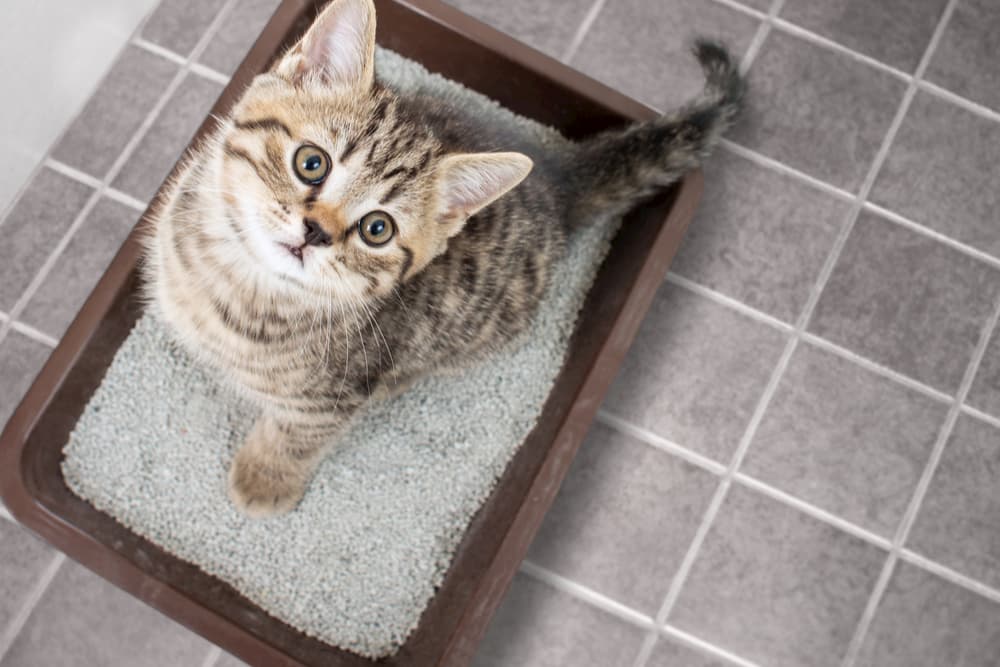Dangers of Flushing Cat Poop Down Your Toilet - Prevent Potential Problems
Dangers of Flushing Cat Poop Down Your Toilet - Prevent Potential Problems
Blog Article
This post following next pertaining to Can You Flush Cat Poo or Litter Down the Toilet? is seriously motivating. Don't skip it.

Intro
As feline proprietors, it's essential to be mindful of just how we dispose of our feline close friends' waste. While it might seem practical to purge feline poop down the toilet, this practice can have destructive consequences for both the environment and human wellness.
Ecological Impact
Flushing pet cat poop presents damaging pathogens and bloodsuckers right into the supply of water, posing a substantial risk to marine environments. These contaminants can adversely impact aquatic life and compromise water top quality.
Health Risks
Along with environmental worries, flushing feline waste can additionally position wellness risks to people. Pet cat feces may consist of Toxoplasma gondii, a bloodsucker that can cause toxoplasmosis-- a potentially serious ailment, particularly for expecting females and individuals with weakened immune systems.
Alternatives to Flushing
Luckily, there are more secure and more responsible ways to get rid of feline poop. Take into consideration the adhering to choices:
1. Scoop and Dispose in Trash
One of the most usual approach of taking care of pet cat poop is to scoop it right into an eco-friendly bag and toss it in the trash. Make sure to use a dedicated litter inside story and throw away the waste immediately.
2. Use Biodegradable Litter
Opt for biodegradable pet cat trash made from materials such as corn or wheat. These clutters are environmentally friendly and can be safely taken care of in the garbage.
3. Bury in the Yard
If you have a backyard, think about hiding feline waste in a marked area far from veggie gardens and water sources. Be sure to dig deep sufficient to avoid contamination of groundwater.
4. Mount a Pet Waste Disposal System
Purchase a pet waste disposal system especially created for feline waste. These systems utilize enzymes to break down the waste, minimizing odor and ecological effect.
Verdict
Liable pet ownership extends beyond supplying food and sanctuary-- it likewise involves proper waste administration. By avoiding flushing cat poop down the toilet and choosing alternate disposal techniques, we can lessen our ecological impact and secure human health and wellness.
Why Can’t I Flush Cat Poop?
It Spreads a Parasite
Cats are frequently infected with a parasite called toxoplasma gondii. The parasite causes an infection called toxoplasmosis. It is usually harmless to cats. The parasite only uses cat poop as a host for its eggs. Otherwise, the cat’s immune system usually keeps the infection at low enough levels to maintain its own health. But it does not stop the develop of eggs. These eggs are tiny and surprisingly tough. They may survive for a year before they begin to grow. But that’s the problem.
Our wastewater system is not designed to deal with toxoplasmosis eggs. Instead, most eggs will flush from your toilet into sewers and wastewater management plants. After the sewage is treated for many other harmful things in it, it is typically released into local rivers, lakes, or oceans. Here, the toxoplasmosis eggs can find new hosts, including starfish, crabs, otters, and many other wildlife. For many, this is a significant risk to their health. Toxoplasmosis can also end up infecting water sources that are important for agriculture, which means our deer, pigs, and sheep can get infected too.
Is There Risk to Humans?
There can be a risk to human life from flushing cat poop down the toilet. If you do so, the parasites from your cat’s poop can end up in shellfish, game animals, or livestock. If this meat is then served raw or undercooked, the people who eat it can get sick.
In fact, according to the CDC, 40 million people in the United States are infected with toxoplasma gondii. They get it from exposure to infected seafood, or from some kind of cat poop contamination, like drinking from a stream that is contaminated or touching anything that has come into contact with cat poop. That includes just cleaning a cat litter box.
Most people who get infected with these parasites will not develop any symptoms. However, for pregnant women or for those with compromised immune systems, the parasite can cause severe health problems.
How to Handle Cat Poop
The best way to handle cat poop is actually to clean the box more often. The eggs that the parasite sheds will not become active until one to five days after the cat poops. That means that if you clean daily, you’re much less likely to come into direct contact with infectious eggs.
That said, always dispose of cat poop in the garbage and not down the toilet. Wash your hands before and after you clean the litter box, and bring the bag of poop right outside to your garbage bins.
https://trenchlesssolutionsusa.com/why-cant-i-flush-cat-poop/

As a keen reader about Can You Flush Cat Poo or Litter Down the Toilet?, I think sharing that excerpt was essential. Are you aware of someone else who is intrigued by the subject? Why not share it. Thanks a bunch for your time. Come back soon.
Call Today Report this page